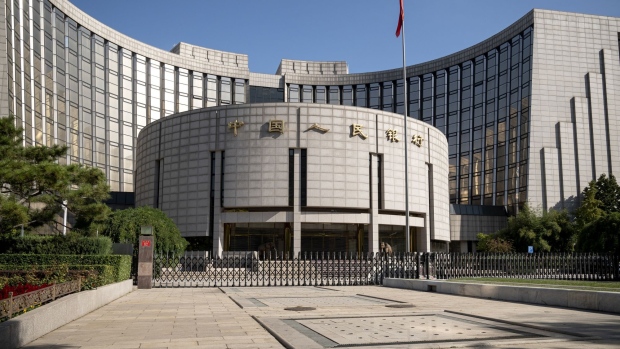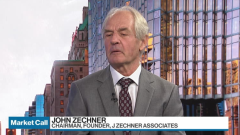Nov 14, 2022
China’s Liquidity Injection Trails Forecasts Amid Maturity Spike
, Bloomberg News

(Bloomberg) -- China sought to maintain ample cash levels in its financial system with liquidity tools of different maturities, helping halt the worst government bond selloff in six years.
The liquidity infusion this month, which was done with a combination of short-, medium- and long-term tools, exceeded the 1 trillion yuan maturity, according to the People’s Bank of China. That coupled with the release of worse-than-expected economic data helped cap the spike in the benchmark bond yield.
The moves signal a shift in market sentiment from Monday, when government bonds posted their biggest selloff since late 2016 following fresh property support measures and tweaks to China’s Covid policy. By Tuesday, hopes for a quick relaxation of virus controls were dampened by the flagship newspaper of the Communist Party, which reiterated Beijing’s pledge to stick with Covid Zero. Fresh evidence of a slowdown in economic activities also boosted the demand for haven assets like sovereign debt.
“It appears to be a largely liquidity neutral operation,” referring to the PBOC’s statement on liquidity tools, said Winson Phoon, head of fixed income research at Maybank Kim Eng Securities. “It probably serves as an interim liquidity bridge and the overall composition has been gradually shifting toward more medium-term targeted funding.”
The PBOC injected 850 billion yuan ($120 billion) via its medium-term lending facility, it said in the statement, at a steady rate of 2.75%. On top of that, it also pumped in 320 billion yuan of medium-to-long-term liquidity by via Pledged Supplemental Lending and re-lending to the tech sector this month. It added another 170 billion yuan of seven-day funding.
The operation “fully met the demand of financial institutions,” the PBOC said, adding that total injections in November were higher than MLF maturities. It had vowed to maintain a “reasonable” growth of money supply and credit last week.
The yield on 10-year government bond slid two basis points to 2.82% as of 11:10 a.m. local time. On Monday, the yield spiked to as high as 2.84%, according to Bloomberg compiled data. That helped to trigger a selloff in three- and five-year onshore corporate bonds, the yields on which surged the most since at least 2016.
--With assistance from Chester Yung and Yujing Liu.
(Updates throughout.)
©2022 Bloomberg L.P.






